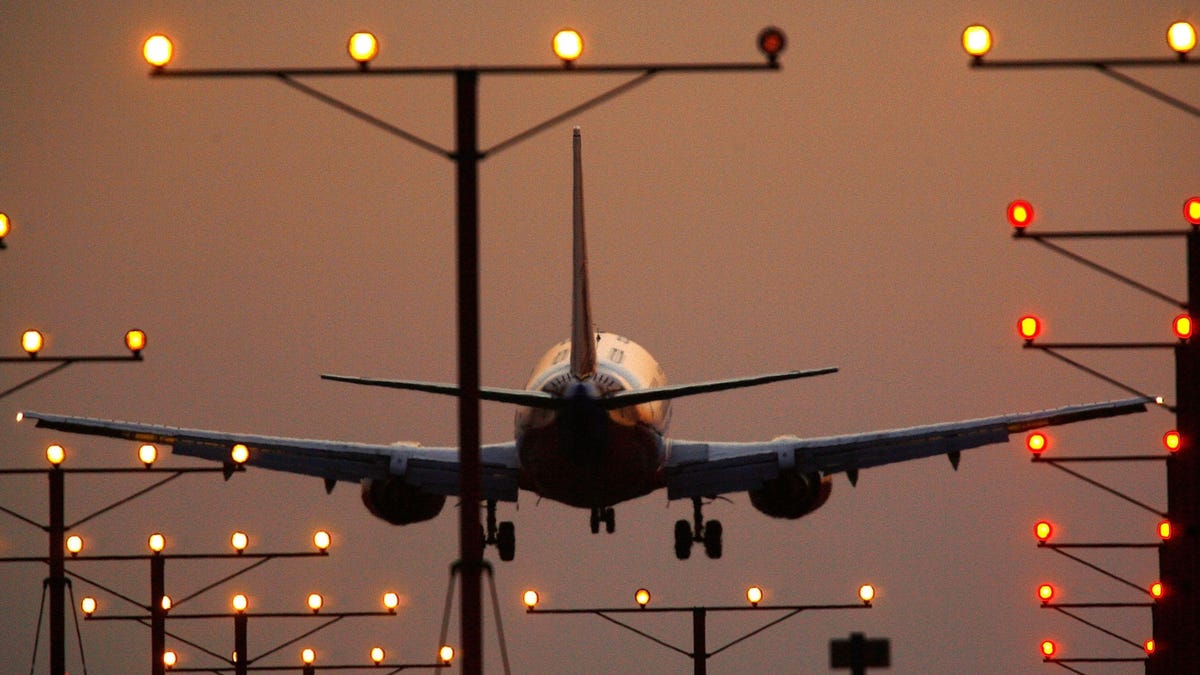
The US airline industry and telecom giants are still divided over whether or not the new C-Band spectrum crucial for 5G networks could cause dangerous interference with aviation systems. If left unaddressed, concerned critics warn 5G caused interference could lead to disastrous delays, flight cancellations, or even worse, Bloomberg noted on Monday. Others, including major telecom trade groups, remain skeptical new 5G will cause any meaningful interference at all.
The specter of 5G interference has even spooked top airline executives like Southwest CEO Gary Kelly, who last week called the problem his “number one concern,” in the near term according to Bloomberg. To get a sense of the potential damage that executives fear, aviation trade group Airlines for America has claimed 5G-related interference could threaten to disrupt as many as 350,000 flights per year. Similar cockpit systems are used in some helicopters as well, particularly in emergency air-ambulance flights. If these systems are deemed unsafe due to interference, that could affect the 40- to 50,000 people the Helicopter Association International expects are transported each year in emergency situations according to Bloomberg.
Both AT&T and Verizon previously agreed to temporarily halt the deployment of their new C-Band spectrum rollouts over fears they would interfere with cockpit safety systems but the new January 5 deadline is quickly approaching. Prior to that first delay, the FAA had reportedly been planning on issuing a mandate requiring flight crews to limit their use of automated cockpit systems. Those restrictions would have come at a cost though. Specifically, the FAA warned interference substantial enough to halt the use of automated cockpit systems could lead to flight cancellations, delays, or diversions in 46 of the largest metro areas in the US, The Wall Street Journal notes.
The debate here revolves around a particular type of spectrum (C-Band) that’s needed to realize the most ambitious promises of 5G connectivity. In the US, this type of spectrum is authorized between 3.7 and 3.98 GHz while the spectrum from aviation navigation systems operates between 4.2 and 4.4 gigahertz, according to Brookings. In theory, this wave gap means the two should be able to happily coexist, but critics warn it’s not so simple.
The Federal Airline Administration and other aviation experts are worried 5G’s faster signals and greater bandwidth could potentially interfere with radio altimeters in some automated cockpit systems commonly used for landing in poor weather and to avoid head-on collisions (yikes) with other aircraft. The concern here is that the affected systems won’t be able to properly filter out signals, an effect something former FCC chair Tom Wheeler has described as “spurious emissions.”
G/O Media may get a commission
One study submitted by the Aerospace Vehicle Systems Institute (AVSI) in 2020 looking into the impact of C-band spectrum waves on avionics found large variations in radio altimeters, with some able to adequately protect against those spurious emissions and others less so. (Those findings have been disputed by 5G supporters being based on extreme assumptions).
Not everyone is convinced 5G will send planes falling from the sky. Detractors broadly include the FCC —the agency which regulates telecommunications in the U.S.— and major telecoms like AT&T and Verizon, who’ve argued the available evidence doesn’t yet confirm 5G will lead to interference. Others have called into question the timing of the airline industry’s concerns since 5G deployment has been in development for years. Adding to the haze even further, some critics have pointed out these same frequencies in question are also already being used in other countries.
“The aviation industry’s fearmongering relies on completely discredited information and deliberate distortions of fact,” Nick Ludlum, aviation trade group CTIA’s Senior Vice President told Gizmodo in an email. “5G operates safely and without causing harmful interference to aviation operations in nearly 40 countries around the world. U.S. airlines fly in and out of these countries every day.”
The FAA’s concerns around 5G were also disputed earlier this month by six former FCC Chairs in a letter to FCC Chairwoman Jessica Rosenworcel. “In this case, the FAA position threatens to derail the reasoned conclusions reached by the FCC after years of technical analysis and study,” the former FCC members said.
A spokesperson for the current FCC told Gizmodo it’s working “productively” with the FAA to find some solution to the mess soon. “We remain optimistic that we will resolve outstanding issues to launch 5G to meet the country’s evolving needs,” the spokesperson said. The FAA did not immediately respond to Gizmodo’s request for comment.
US telecoms, particularly AT&T and Verizon, have a good reason to oppose any 5G rollout delays. Collectively, the firms dished out $81.7 billion on C-band spectrum in an FCC auction earlier this year to buff their network. The majority of that spending came from Verizon ($45.45 billion) and AT&T ($23.41 billion) which analysts argue have both been playing catch up in the 5G race with industry leader T-Mobile.
“It is critical that these discussions be informed by the science and the data,” AT&T previously told Gizmodo. “That is the only path to enabling experts and engineers to assess whether any legitimate coexistence issues exist.”
The bickering over 5G deployment comes as the airline industry struggles with supply chain shortages, Covid-19 induced restrictions, and unruly passengers that could cost as much as $2.1 billion in disruption, according to Airlines for America data cited by Bloomberg.
Update 12:10 p.m ET: Added statement from FCC.
